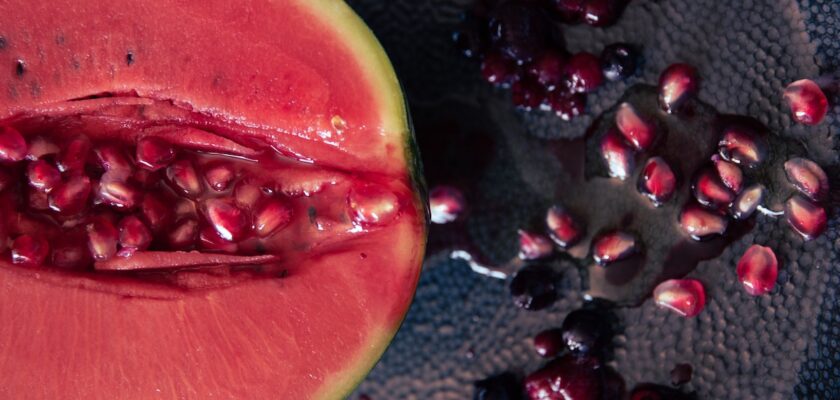There’s no question that pregnancy changes your body in many ways, and the skin down there is no exception. But, what exactly is going on with your vulva when it starts to turn purple?
It’s natural for the clitoris and inner lips to become darker when you are sexually aroused. This is due to increased blood flow and lubrication.
It’s Normal
Women often feel a bit alarmed when they notice that the skin on their vulva is different from what it used to be. However, many of these women are misinterpreting what they see. The vulva is simply the canal that connects the uterus and cervix to the outside world, and it can range in color from pale pink to very dark brown or black depending on a woman’s skin tone.
It’s normal for the skin of the vulva to become darker as we age due to friction and hormone fluctuations. The genital area is densely packed with melanocytes, and the natural pigmentation of this skin varies by woman. It is also common for the lips of the vagina (the inner and outer “lips”) to become darker during sexual arousal, as the blood flow to this area increases during that time. It will return to its usual color after climax or the feeling subsides.
In addition, it’s normal for a woman’s menstrual blood to stain the vulva. If a person’s menstrual blood regularly soaks pads or she experiences other symptoms, like severe pain or fatigue, it’s best to consult a doctor. There are a number of things that can cause discoloration, such as yeast infections, cysts, bacterial vaginosis, heavy bleeding, or cancer. It’s important for a woman to get to know her vulva and what its normal color is so she can identify any changes right away.
It’s a Sign of Pregnancy
A lot happens during pregnancy, and when you’re waiting to see two pink lines on a home pregnancy test, every slight twinge and cramp gets read into as another sign that you’re expecting. That includes your vulva assuming a purple hue, which is a pretty common pregnancy symptom called Chadwick’s sign. It can occur as early as the first trimester, and may get a little more intense later on in pregnancy as your uterus grows bigger and presses down on your labia (or “lips”).
If you’re experiencing purple vaginal discharge accompanied by a creamy, milky white texture, that’s also perfectly normal. It’s caused by a thickening of the cells that line your vulva, and it should stop when your pregnancy ends.
Of course, there’s a lot of other things that can change color in your vulva during pregnancy, too. Glamour recently reported that a shift in hormones can make your skin down there darken, and that’s not necessarily a bad thing. However, it’s best to talk to your ob/gyn if you notice an extreme or sudden change in your vulva’s shade, as it could be a symptom of a health problem. Also, experts strongly discourage using vaginal lightening treatments, which can damage the sensitive skin and disturb your vulva’s delicate balance of good bacteria. Your vulva is important, so please treat it with care.
It’s Varicose Veins
Varicose veins are swollen, twisted blood vessels that can be seen just under the surface of the skin. They develop when the one-way valves in your blood vessels weaken or fail, allowing blood to back up and pool in the veins. You’re more likely to get varicose veins if you are female, over 40, or have a family history of them. You’re also at risk if you spend long periods of time standing or sitting, wear tight clothing that compresses your legs, or are overweight.
Varicose vaginal veins are usually lighter than the surrounding skin. But they can turn a dark purple or brown, especially in people with darker skin.
Your doctor will do a physical exam and ask you about your symptoms. He or she may also order an ultrasound or x-ray to see your blood vessels. Your doctor might inject dye into your veins, which outlines them on an x-ray image. This is called an angiogram.
If you have a small purple bump with red around it on your vulva, talk to your doctor about it. It might be a Bartholin cyst, a painful condition caused by an infected hair follicle. It’s more common in women who use birth control pills or are going through menopause. If you have a Bartholin cyst, you’ll probably need medication or an at-home treatment like a sitz bath.
It’s Lichen Simplex
Often, the color of the skin around the vulva changes in response to irritation. This may happen from wearing tight-fitting clothing, abrasions, or contact with chemicals or other substances. The color can range from light pink to dark brown or even purple. However, if this itching becomes extreme and leads to scratching, then the result is a condition known as lichen simplex chronicus (LSC). This condition can cause red, scaly, hyperpigmented plaques that look like leather. It can occur on any self-accessible area of the body, but is most common on the arms, legs, hands, chest, neck, and genitals. People who have psoriasis, eczema, or other skin conditions are prone to developing LSC.
The first signs of this condition are itchy areas that resemble a blister or a rash. The skin can become dry and scaly, and then thicken as you continue to rub and scratch. Eventually the skin can become brittle and change to a leather-like texture. This condition can be painful and embarrassing, and it is exacerbated by stress, anxiety, and other emotional triggers.
Your doctor can diagnose this problem by examining the affected area and asking about your symptoms. They will check the area for infection and might also order a skin lesion biopsy for more severe cases. They will also prescribe a medication to help with the itching and to prevent the itch-scratch cycle from getting worse.

